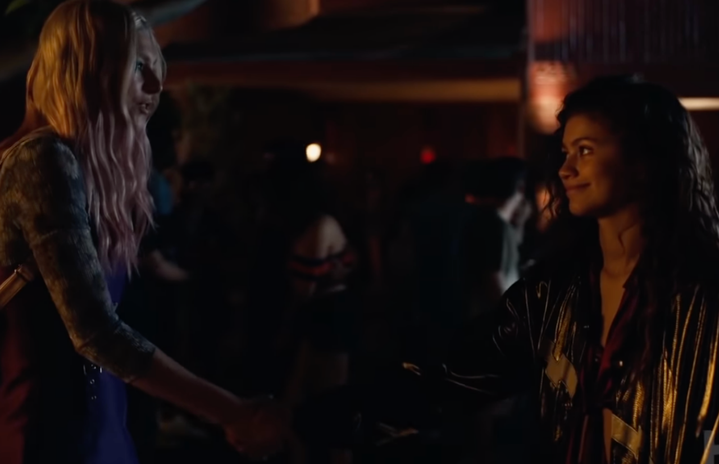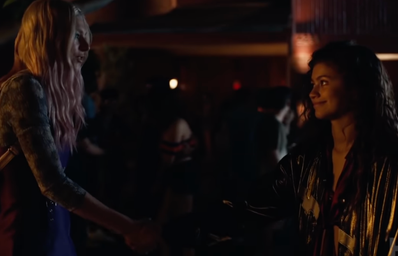Under Christopher Booker’s The Seven Basic Plots: Why We Tell Stories, all stories you have read or been told throughout history gravitate toward seven underlying plots. The literary archetypes carved by Booker in his essay are overcoming the monster, rags to riches, the quest, voyage and return, comedy, rebirth, and tragedy — and, to the English journalist, are recycled over and over again even in different bodies of work, from Greek mythology’s oral storytelling down to the use of literary, classic tropes, like the not-so-Shakesperian-anymore star-crossed lovers.
Although the synopses of most stories fit into the seven structures that Booker outlines, every single plotline is still unique. Why? Because of the characters and the world building. For example, although Romeo and Juliet is technically a tragedy, its storytelling makes the play standout as a prime example of the star-crossed lovers trope, which Shakespeare himself popularized. Its uniqueness, though, stems from how it was able to change and recently unravel into a newfound happy ending that star-crossed characters have always deserved.
The foundation of the star-crossed lovers trope is built on two characters seemingly destined for one another, but pulled apart by external forces that ultimately lead to their demise. Sure, Romeo and Juliet was written in 1595, but this trope still finds itself rooted in modern works of fiction, like Euphoria and Skam.
“The need for love, agency and autonomy are ubiquitous,” Miami-based film and television producer Ayelet Emma Regev Junger tells Her Campus. According to Regev Junger, the sympathy we feel towards Romeo and Juliet may be the reason the trope is still popular, even almost 500 years after its release. “What makes the story of Romeo and Juliet so captivating is that it’s actually a very common situation. Admittedly, most of those situations don’t end in tragic and violent deaths, but, in a way, they do rob us of life: they deny us love.”
West Side Story is another obvious example of how being denied love has taken different forms in media throughout the years: set in mid-1950s Manhattan, this musical explores the rivalry between two teenage street gangs. Sounds familiar, right?
But characteristics of the classic Romeo and Juliet star-crossed lovers trope can still be reflected, according to Regev Junger, in more indirect ways. Originally, this archetype was associated with the tragedy genre, but this has changed over time, conserving only the core star-crossed theme that “is inspired by the clash between the need for love, safety, approval, and autonomy.” This includes, even though surprising to many, happy endings to what were only ill-fated couples.
Even and Isak, from the Norwegian drama show Skam (2015), parallel the original star-crossed lovers storyline, as they are lovers brought apart by factors out of their control. The numerous references to Baz Luhrmann’s Romeo and Juliet relate to Even and Isak, as they fell in love at first sight and try to fight against social, emotional and parental pressures to be together. Ultimately, they do find their happy ending, but not after defying the odds and the public opinion that couldn’t possibly be together.
Still, even though there is a clear similarity there, the original dynamic of dying for each other is broken when it comes to the ending. As it happens in most modern retellings, the destiny of the star-crossed characters nowadays is much less tragic, like Camp Rock’s Nate and Dana or Bella and Edward from Twilight. Both these couples had fathers that went against their relationship with their male counterparts. Dana even had the Capulet versus Montague rivalry set in the Camp Rock and Camp Star competition.
But, at last, these couples have something the OGs didn’t get: a happily ever after. Their ending was not tragic, but involved the lovers being together: Dana joined Camp Rock and Bella married Edward.
Euphoria (2019) is also rumored to be a particular retelling of Romeo and Juliet. According to fan theory, echoes of Shakespeare’s play can be found in Rue and Jules’ relationship. Besides sharing the same initials as Romeo and Juliet (R and J), the use of Tupac’s music to represent Rue and Biggie’s to represent Jules seems like an intentional choice on the soundtrack that aims to convey their ‘rivalry.’ Like Tupac and Biggie, Rue and Jules’ relationship was ripped apart by matters of pride, although they were close once.
Additionally, in season one’s Halloween party episode, Euphoria directly quoted Act II of Romeo and Juliet, with Jules saying to Rue, “Although I joy in thee, I have no joy of this contract tonight.” Like Juliet with Romeo, Jules is worried about how her and Rue’s relationship may be moving too fast.
The very goodbye said by Rue, as she leaves Jules alone in the theater with a kiss, reminds us of how Romeo sent his farewell to Juliet when he decided to drink poison to join her in death. But, once again, the characters get a somewhat satisfying — and we can even say happy, all things considered — ending when compared to the original plot. Although everything points to Rue and Jules not ending up together, Rue’s forgiveness gives an amiable conclusion to their star-crossed love story.
So, though the early star-crossed archetype was deeply rooted in the unfortunate ending of the lovers, it seems like tragedy isn’t so connected to this plot nowadays. Harry Wallett, from the romance-specialized publishing house Relay Publishing, tells Her Campus that, in contemporary fiction, “the obstacles are now overcome and happily ever afters can be achieved. Juliet wakes up before Romeo poisons himself.”
Even the Montague and Capulet rivalry has changed to adapt to real-life, 21st century scenarios. Timely factors, like forced marriages and duels, have shifted like the societal pressures have throughout time. Because that, after all, this is what this trope is about: two unlikely people falling in love with each other. Not the tragedy that can follow, but how people can love each other despite differences in upbringing, social status, beliefs and so forth. Sure, tragic endings can be seen in modern star-crossed narratives (like with Lexa and Clarke, from Netflix’s The 100), but it isn’t what this archetype is about anymore. Star-crossed lovers do deserve happy endings now.
And yet, the star-crossed lovers trope will continue to change, for Regev Junger says we should remember that Shakespeare did not invent this dynamic, but “rather, star-crossed lovers are an integral part of the human condition.”


